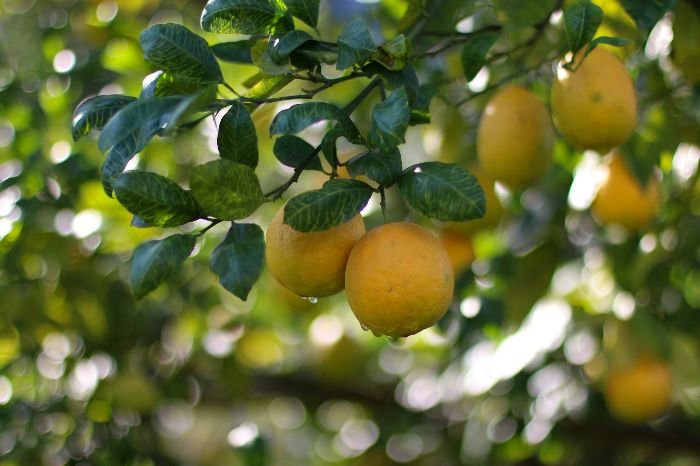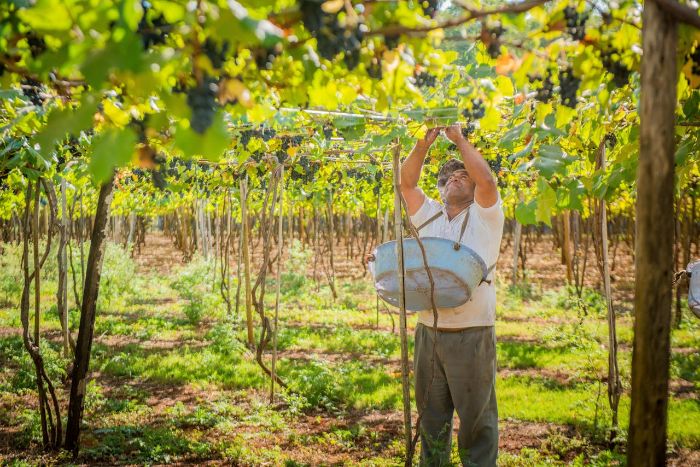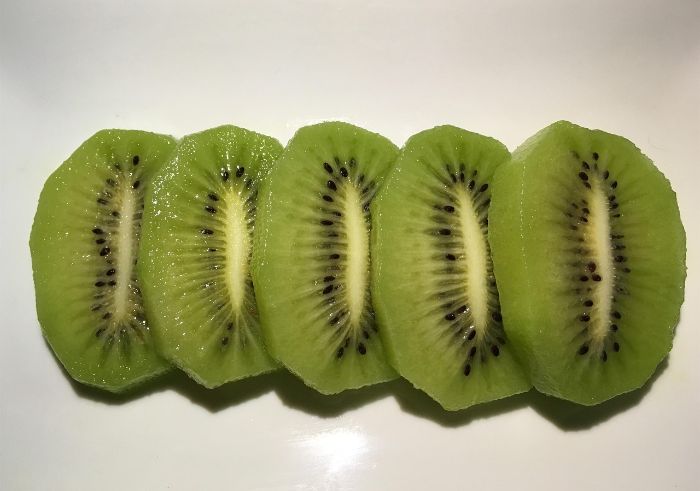Do you dream of picking fresh, juicy citrus fruits from your garden? Citrus trees are loved for their bright colors, amazing scents, and yummy flavors. With many types of citrus trees out there, how do you pick the best one for you?
We’ll help you choose the right citrus tree for your garden. We’ll look at what climate they need, how much space they require, and what each type offers. After reading this, you’ll know how to get the best citrus fruits from your garden.
Key Takeaways:
- Choosing the right citrus tree variety is essential for a successful home garden.
- Consider the climate requirements of different citrus tree varieties.
- Evaluate the available space in your garden for planting citrus trees.
- Popular citrus tree varieties offer a wide range of flavors and characteristics.
- By selecting the right citrus tree variety, you can enjoy a continuous supply of homegrown citrus fruits.
Table of Contents
About Citrus Trees
Gardening can be so rewarding, especially when you grow citrus trees. These trees with their bright leaves and fragrant flowers are a hit with anyone who loves plants. It doesn’t matter if your garden is small or big. Citrus trees will flourish and make your outdoor area beautiful.
Growing citrus trees means you can pick fresh fruits right at home. Imagine picking a ripe orange or a sour lemon from your own tree. The taste of these homegrown fruits is the best. Plus, you know they’re fresh and safe to eat.
Citrus trees look really pretty too. With their shiny leaves and colorful fruits, they draw the eye. They can turn your backyard into a gorgeous, green space. Whether you want more color or a peaceful place, citrus trees are the answer.
There are many types of citrus trees to choose from. You can go for sweet oranges or tangy limes. There’s a citrus fruit for every preference. Plus, some trees stay small, making them great for tiny gardens or pots. Others can grow big and make a real statement.
We’re going to talk about the various citrus tree types soon. We’ll cover their special traits, how they grow, and their care needs. Whether you’re just starting in gardening or already know a lot, this info will help. You’ll learn how to pick the best citrus trees for your garden.
Understanding Climate Requirements
It’s key to know what climate citrus trees need to grow well at home. Citrus trees like certain temperature, rain, and climate conditions. You can help your citrus trees grow strong and make fruit by giving them the right environment. Now, we’ll look into what citrus trees need, including perfect climates and the citrus types for each condition.
Ideal Climates for Citrus Trees
Citrus trees love warm, almost tropical places where it’s not too hot or cold year-round. They do best when it’s between 55°F and 85°F (13°C and 29°C). They need at least 6 hours of sun daily for their fruit to be tasty and plentiful. Rain-wise, they like a moderate amount, around 30 to 60 inches (76 to 152 cm) each year. It’s a must to have soil that drains well for the citrus to grow healthy.
Cold-Hardy Citrus Varieties
Live in a cold area? You can still grow citrus by choosing types that handle the cold. These trees can survive frost and freezing temps with little harm. Good choices for colder places include the Satsuma mandarin, Meyer lemon, and kumquat. They grow well where winters are cold, and the season to grow is short.
Heat-Tolerant Citrus Varieties
Living in a hot, dry place? There are citrus trees that can handle the heat. These trees thrive in high temperatures and low humidity. Varieties like the Valencia orange, grapefruit, and key lime do well in such conditions. They stay strong in the heat and still give us juicy, tasty fruits.
Evaluating Your Garden Space
Before planting citrus trees, check your garden space for the best growth. Think about using pots or planting in the ground. Look at what each type of citrus tree needs in space, soil, and sunlight.
Container vs. Ground Planting
Decide if you want to grow citrus trees in containers or the ground. Growing in containers is good for small areas. You can move the trees to get more sun or to avoid bad weather.
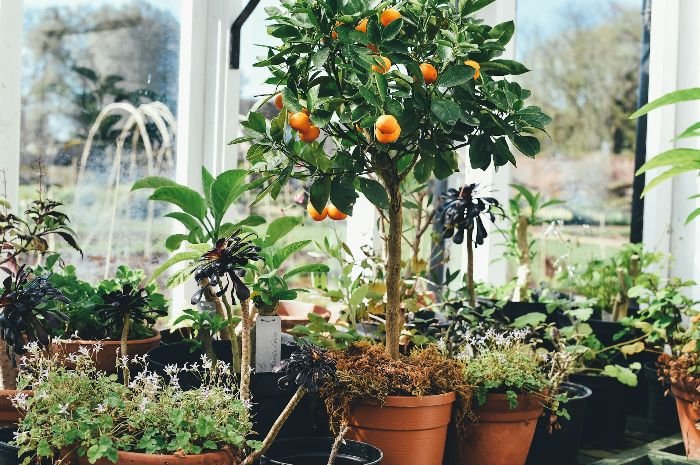
Planting in the ground means putting trees directly into the soil. This works well in big gardens. Trees can get more nutrients and space for roots. It takes more work to prepare the soil but can make your trees bigger and better.
Space Considerations for Different Varieties
Choose citrus trees that fit your garden’s size. Dwarf trees or those on special rootstocks don’t grow as big. They are good for small spaces or in pots. You can still have beautiful citrus trees.
Bigger trees, like standard lemons or oranges, need more room to grow. Make sure you have enough space for them. They need a certain distance apart for good air flow. This helps prevent problems like too much shade or pests.
Soil and Sunlight Requirements
Citrus trees like soil that drains well and has the right pH. Test your soil and adjust it if needed before planting. You might need to add things to make the soil better, especially with clay soil.
Citrus trees love the sun and need a lot of it to grow well and produce fruit. They should get at least six hours of sun each day. Find the sunniest spots in your garden for your citrus trees.
Thinking about your garden space, how to plant, tree size, and the right soil and sunlight helps your citrus trees do well. Follow these steps for healthy, happy trees in your garden.
Popular Citrus Tree Varieties
In this section, we’ll look at the favorite citrus tree varieties. We’ll talk about lemon, orange, lime, grapefruit trees, and more. Each type of citrus tree has its own taste, way of growing, and needs.
Lemon Trees
Lemon trees are famous for their bright yellow fruits and sour taste. People use lemons in many ways, like cooking, baking, and making drinks. Lemon trees grow small, so they’re good for pots. They need a lot of sun and soil that drains well to do well.
Orange Trees
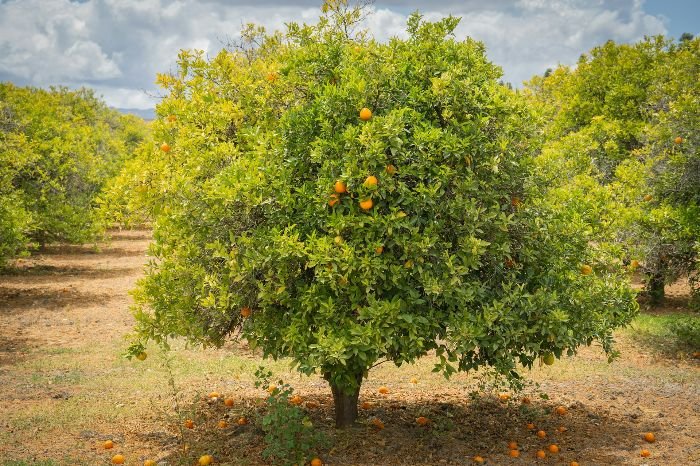
Orange trees give us delicious sweet and juicy fruits. You can find different types, such as navel and Valencia oranges. Each kind tastes a bit different and grows at certain times. Orange trees enjoy plenty of sunlight and soil that drains well. They do best in warm, tropical areas.
Lime Trees
Lime trees add a tangy kick to food and drinks. Key, Persian, and Kaffir limes are well known. Lime trees do best with a lot of sunlight and soil that drains well. You can grow them in pots for easy moving in the cold.
Grapefruit Trees
Grapefruit trees grow large, juicy fruit with a mix of sour and sweet. You can find white, pink, and red grapefruits. They need full sun and soil that drains easily. Grapefruit trees love a warm, tropical climate. They are great for making fresh juice and adding to salads.
Other Citrus Varieties
Besides the well-known types, there are many more citrus varieties to find. Tangerines, mandarins, pomelos, and kumquats are some examples. Each one has a unique flavor and thrives in certain climates. Looking at these different citrus trees can add new tastes to your garden.
Choosing the Right Citrus Variety for Your Climate
To grow citrus trees at home, pick a variety that fits your climate. Different types need specific weather. This choice helps your trees grow well and make lots of fruit.
Citrus Trees for Tropical Climates
In warm, humid areas, certain citrus trees do best. They love the heat and lots of rain. Heavy rain and warmth make a perfect home for many tropical fruit trees.
Citrus Trees for Subtropical Climates
In areas with mild winters, you have more citrus tree options. These places see light frost but not too cold. Many citrus trees do well in these not-too-chilly spots.
Citrus Trees for Temperate Climates
Cold winter areas can also have citrus trees. Choose types that handle frost and cold snaps. These specially selected citrus trees can deal with colder weather.
Choosing the best citrus for your region makes a happy space for your trees. This means more home-grown fruit for you to enjoy.
Planting and Care Tips for Citrus Trees
To grow healthy citrus trees that produce lots of fruit, you must do things right from the start. This means preparing the soil well, watering and feeding them right, and keeping the trees trimmed. By doing these things, your citrus trees will have the best chance to do well.
Soil Preparation and Planting Techniques
How you prepare the soil is important for your trees. Use soil that drains well and has lots of organic material. Good soil means your trees get the food and water they need to be healthy.
When planting, make the hole twice as big as the tree’s root ball. Take out any weeds from the spot. Then, mix in some compost or manure for extra food for the tree. Place the tree in the hole so the bud union is above the ground. Fill in the hole with soil well and water a lot to help the soil settle.
Watering and Fertilizing Guidelines
Citrus trees need the right amount of water and food to grow well. Water them deeply, but not too often. Let the soil dry out a bit between waterings. This helps the roots stay healthy and not too wet.
For food, use a special citrus tree fertilizer. Put it on how the package says to, and water after. This helps the tree take in the food. Keep the fertilizer away from the trunk.
Pruning and Shaping Your Citrus Trees
Trimming your trees is good for their health and helps them make more fruit. Do this in late winter or early spring.
Get rid of any branches that are dead or look bad. Let more light into the tree by thinning out the top. Avoid cutting too much. And, use sharp tools to cut to keep the tree healthy.
Managing Pests and Diseases
We will talk about common pests and diseases that affect citrus trees here. It’s key to know about these to keep your trees healthy. By learning how to spot and deal with these issues, you can avoid big damage and keep your trees pretty and fruitful.
Common Citrus Pests
Citrus tree owners often deal with pests like aphids, leafminers, and psyllids. Also, scale insects and whiteflies are common foes.
These pests eat the leaves, stems, and fruit of citrus trees. Watch your trees often for signs of bugs and take steps to control them.
Disease Prevention and Treatment
Citrus trees can also get sick from various diseases. A few include canker, greening, and black spot.
To keep diseases away, follow good care practices. Prune regularly, water right, and feed your trees well. Also, treat any disease signs early to stop it from spreading and harming your trees.
Organic and Chemical Control Methods
There are choices like using natural methods or chemicals to handle pests and diseases. Organic ways use things like helpful bugs, neem oil, and soap sprays for pests.
Using chemicals means using man-made bug or fungus killers. They can work, but follow guidelines carefully to keep the planet safe.
Your choice between natural or chemical ways depends on your preference and the problem’s size. Also, think about any rules where you live.
Knowing how to deal with pests and diseases helps your citrus trees stay well. This way, you can savor the joy of growing your own citrus fruits.
Harvesting and Using Your Citrus Fruits
This part dives into how to pick and use your citrus fruits from your trees. It’s crucial to know the best time to pick them and the right way to do it. This knowledge helps make them tastier and better to eat.
When and How to Harvest Citrus Fruits
Picking the fruits at the right time is very important. They need to be fully ripe but still a bit hard. Most often, this happens in late fall to early winter. Yet, the exact time can change based on the fruit type and where you live.
To get the best taste and quality, here’s how to pick your citrus:
- Gently twist the fruit until it comes off the tree. Or, cut the stem with pruning shears.
- Don’t pull the fruit hard as it could get hurt.
- Look at each fruit for bad spots. Throw away any that don’t look good.
Storage Tips for Fresh Citrus
Keeping your citrus fresh after picking is all about the right storage. Here are some tips to help your fruits last longer:
- If you’ll eat them within a week, store at room temperature.
- For longer storage, keep them in the fridge in the crisp drawer.
- Don’t keep them near fruits or veggies that give off ethylene gas. This gas can make them go bad faster.
- For even longer keeping, juice them and freeze the juice in airtight bags.
Culinary and Non-Culinary Uses
Citrus fruits are not just tasty. They can be used in many ways, both for food and not. Here are some great ideas:
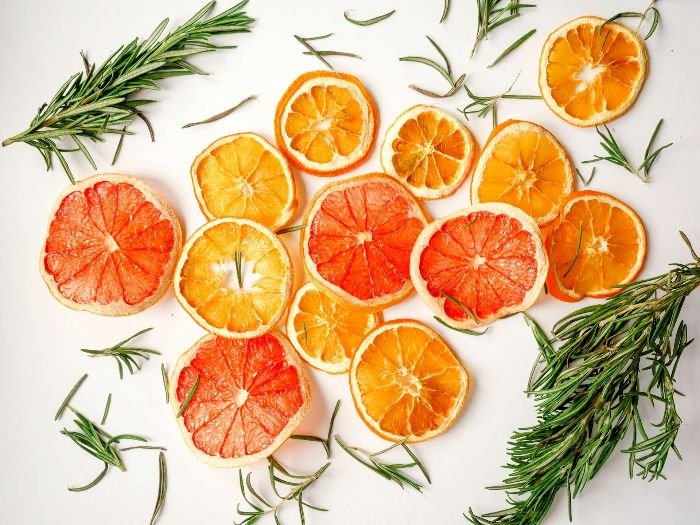
- Culinary Uses – Put fresh juice or zest in all your meals and drinks. Try making oils, vinegars, or syrups with citrus flavors. Also, make your marmalade or chutney.
- Non-Culinary Uses – Citrus peels can freshen the air, clean, or help your garden. You can make your beauty products, like lotions or perfumes, from citrus. They are also good for keeping bugs away or making your home smell nice.
With these ideas, you can use all your citrus fruits in many creative ways!
Conclusion – Enjoying Your Homegrown Citrus
Concluding this piece on growing your own citrus trees highlights many benefits. A key joy is the chance to eat fruits you grew at home. These fruits are fresh and tasty because you’ve looked after them from the start.
You will also feel proud of your citrus trees. Watching them grow and produce fruits can be very satisfying. Plus, you learn about nature and gain useful gardening skills.
Connecting with other people who love citrus is important too. You can swap tips, find new types, and get creative ideas. This can happen through joining online groups, local clubs, and events.
Don’t wait to start on your citrus-growing adventure. The reward of growing your own and then enjoying the harvest is huge. So, take on this wonderful hobby. Make your home a place where fruitful trees bring you happiness for many years.
FAQ
How do I select the right citrus tree variety for my home garden?
To find the best citrus tree variety for your garden, look at what your area is like. Think about how much space you have and if you can grow in the ground or in a pot. Also, check which kinds of citrus trees do well in your climate. This will help you pick a tree that fits your garden and the weather.
What are the benefits of growing citrus trees at home?
Citrus trees make your garden look and smell better. You get to pick your own fresh, natural fruits. These fruits add unique flavors to foods and can be used in many fun ways. So, growing your own citrus trees is both rewarding and tasty.
What are the different citrus tree varieties available?
You can choose from many types of citrus trees for your garden. Some options are lemon, orange, lime, and grapefruit trees. There are also special kinds with different tastes and features. Looking into all these choices will help you find the perfect tree for your space.
What climate requirements do citrus trees have?
Citrus trees do best in warm or mild weather. Some kinds can handle cold snaps and frost. Others love hot weather. So, make sure to pick a tree that likes the weather where you live.
What are the most popular citrus tree varieties?
The favorite citrus trees are lemons, oranges, limes, and grapefruits. Each tree has its own special taste and needs. Find out about these to choose which tree is right for you and your garden.
What are some common pests and diseases that can affect citrus trees?
Watch out for aphids, scale bugs, and leaf miners on your citrus trees. Diseases like canker, greening, and root rot can also happen. Spotting and stopping these pests and diseases fast keeps your trees healthy.






